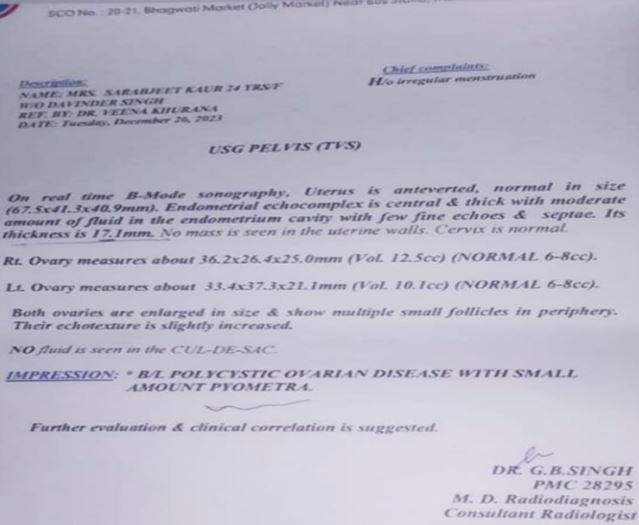Ayurvedic Synergy: Combining Principles for Optimal PCOD Management - A Case Study
DOI:
https://doi.org/10.21760/jaims.10.5.51Keywords:
PCOD, Pushpaghni Jataharini, Aartava Kshaya, Dashmoolarishta, Sahacharadi TailaAbstract
PCOD is like an opera where the ovaries take center stage, but the script gets rewritten, leading to an unpredictable performance. The exact cause is still unknown, but several identified factors that contribute to its development are Hormonal imbalance, Genetic factor, Environmental toxins, Stress, Disturbed lifestyle, Disruption in body's natural rhythms. PCOD is not directly stated in the Samhita, but clinically it is similar to Aartavavaha Strotas Dushti, Nastaartava, Granthi, and Pushpaghni Jataharini. In the present case study, A 24year old married woman came to OPD of PTSR department of IAS&R, Kurukshetra with clinical features such as irregular menses with scanty flow, mood swings, disturbed sleep, Mild acne on face, bloating etc. Patient was a diagnosed case of PCOD as she had already visited allopathic hospitals. Her USG report shows multiple small follicles in Necklace pattern in bilateral ovaries. Hormone test shows LH-FSH ratio value >2.50. Blood reports suggestive of Hb-9.0g%,vit D3-16.76ng/ml, vit B12 - 245. She had undergone hormonal therapy for 3 months and later discontinued the treatment. This case was managed by Tab. Sukumaram Kashayam,Tablet Gynocyst, Tila Granules, Dashmoolarishta and Kaumaryasava, Diet &Lifestyle intervention along with Matra Basti of Sahacharadi Taila mixed with Murchhit Tila Taila. This treatment gave very significant result related to overall health of the patient.
Downloads
References
Dutta DC, Konar H. DC Dutta’s textbook of gynecology. 7th ed. New Delhi: Jaypee Brothers Medical Publishers; 2016. Chapter 29.
World Health Organization. Polycystic ovary syndrome [Internet]. Geneva: WHO; [cited 2025 Jun 28]. Available from: https://www.who.int/news-room/fact-sheets/detail/polycystic-ovary-syndrome
Sharma H. Kashyap Samhita. Kalpa Sthana, Revati Kalpa, Shloka 33. Varanasi: Chaukhamba Sanskrit Pratishthan; [year unknown].
Shastri K, Chaturvedi G, editors. Charaka Samhita. Part I. Sutra Sthana, Chapter 5, Verses 13–14. Varanasi: Chaukhamba Prakashan; 2018.
Tiwari P. Ayurvediya Prasuti Tantra Evam Stree Roga. Part II (Stri Roga). Chapter 2. Varanasi: Chaukhamba Orientalia; 2018. p. 163.
Metangale AR, Mishra BR. Therapeutic yoga for the management of polycystic ovarian syndrome – a review. J Ayu Int Med Sci. 2024;9(11):276–82.
Lalita, Tanwar S, Kumar Panda J, Rani T. Ayurvedic approach to manage polycystic ovarian syndrome with Yoga Basti – a case study. J Ayu Int Med Sci. 2024;9(1):298–303.
Mudiganti N, Rao RK, Prabhu K, Kaliaselvi VS. Antioxidant study of one Ayurvedic medicine “Sukumara Kashayam” [Internet]. Bharath University and Mepco Schlenk Engineering College; 2017 [cited 2025 Jun 28]. [Source link incomplete].
Vaidyaratnam Oushadhasala. Tila Kwatha granules – regulates irregular menstruation in PCOS [Internet]. [cited 2025 Jun 28]. Available from: https://vaidyaratnammooss.com/tila-kwatha-granules-new
Sakhare S, Raut R, Dole V, Dongare K. Clinical efficacy of Sahacharadi Tail Basti in management of PCOS – a single case study. AYUSHDHARA. 2022;9(2):128–32.















